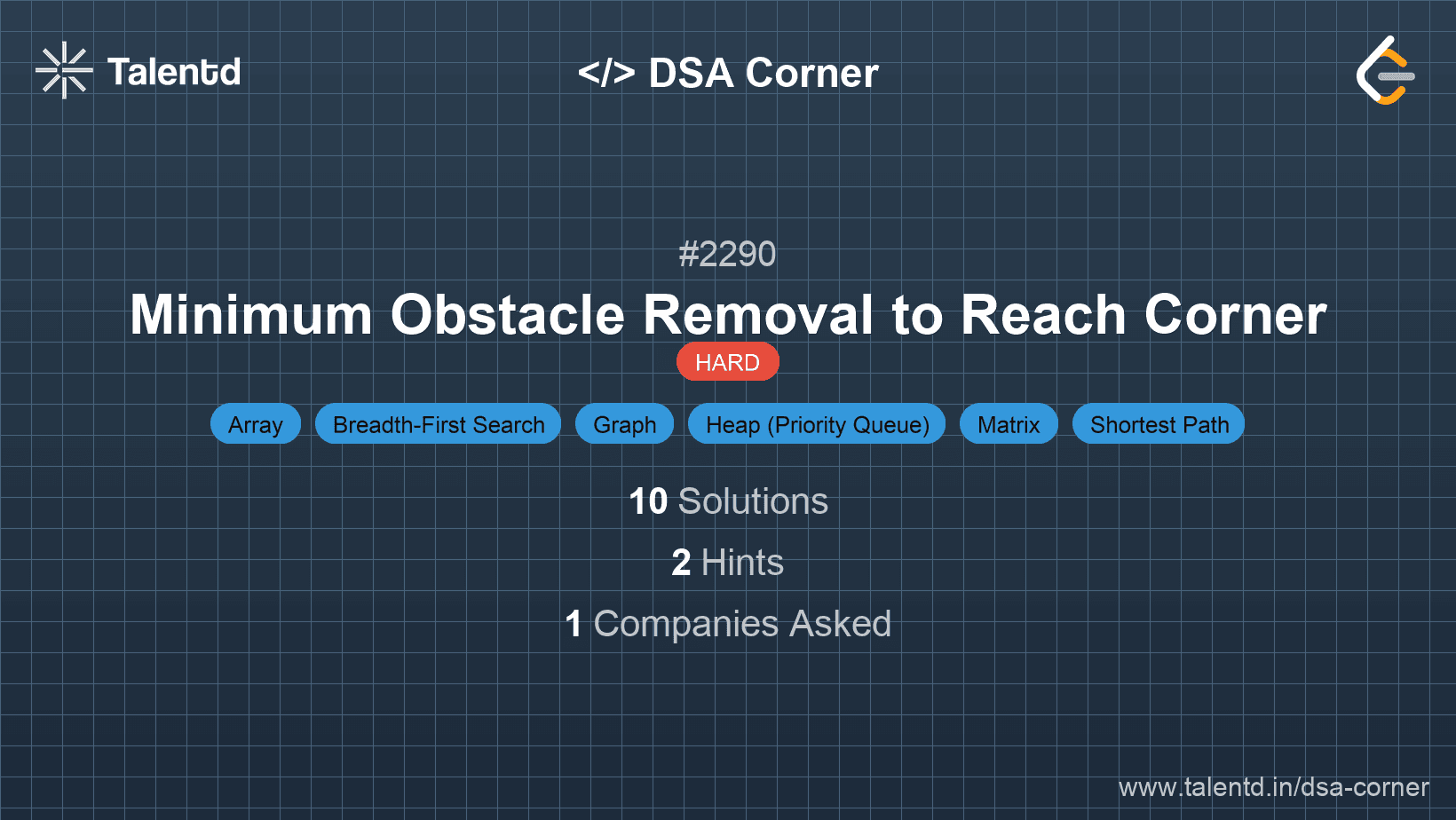
Sponsored
Sponsored
This approach uses a priority queue (or deque) to implement a modified Dijkstra's algorithm to explore the grid in a way similar to the 0-1 BFS (Breadth-First Search). Here, obstacles count as 'cost', and we try to find the minimum 'cost' path from the top-left corner to the bottom-right corner. We assign a priority based on the number of obstacles removed.
Time Complexity: O(m * n)
Space Complexity: O(m * n)
1function minimumObstacles(grid) {
2 const m = grid.length, n = grid[0].length;
3 const dist = Array.from({ length: m }, () => Array(n).fill(Infinity));
4 dist[0][0] = 0;
5 const deque = [];
6 deque.push([0, 0]);
7
8 const directions = [[0, 1], [1, 0], [0, -1], [-1, 0]];
9
10 while (deque.length > 0) {
11 const [x, y] = deque.shift();
12 for (const [dx, dy] of directions) {
13 const nx = x + dx, ny = y + dy;
14 if (nx >= 0 && nx < m && ny >= 0 && ny < n) {
15 const cost = dist[x][y] + grid[nx][ny];
16 if (cost < dist[nx][ny]) {
17 dist[nx][ny] = cost;
18 if (grid[nx][ny] === 0) {
19 deque.unshift([nx, ny]);
20 } else {
21 deque.push([nx, ny]);
22 }
23 }
24 }
25 }
26 }
27
28 return dist[m - 1][n - 1];
29}This JavaScript solution leverages an array functioning as a deque to efficiently navigate the grid using a breadth-first-inspired approach with path priority mixing. ensures moving preferentially through non-blocked paths while making calculated 'costly' detours as needed, maintaining optimal path progression with minimal obstruction disturbance.
In this approach, we utilize dynamic programming combined with a monotonic queue to solve the problem of reaching the bottom-right corner with minimal obstacle removal. This alternative method involves leveraging the properties of dynamic arrays to store and update minimal removal costs dynamically while using a queue to maintain an effective processing order based on current state values.
Time Complexity: O(m * n)
Space Complexity: O(m * n)
1using System;
2using System.Collections.Generic;
public class MinimumObstaclesDP {
public int MinimumObstaclesDPMethod(int[][] grid) {
int m = grid.Length, n = grid[0].Length;
int[][] dp = new int[m][];
for (int i = 0; i < m; i++) {
dp[i] = new int[n];
Array.Fill(dp[i], int.MaxValue);
}
var deque = new LinkedList<(int, int)>();
dp[0][0] = 0;
deque.AddFirst((0, 0));
int[][] directions = { new[] {0, 1}, new[] {1, 0}, new[] {0, -1}, new[] {-1, 0} };
while (deque.Count > 0) {
var current = deque.First.Value;
deque.RemoveFirst();
int x = current.Item1, y = current.Item2;
foreach (var dir in directions) {
int nx = x + dir[0], ny = y + dir[1];
if (nx >= 0 && nx < m && ny >= 0 && ny < n) {
int cost = dp[x][y] + grid[nx][ny];
if (cost < dp[nx][ny]) {
dp[nx][ny] = cost;
if (grid[nx][ny] == 0) {
deque.AddFirst((nx, ny));
} else {
deque.AddLast((nx, ny));
}
}
}
}
}
return dp[m - 1][n - 1];
}
}This approach, implemented in C#, uses the dynamic programming paradigm, combined with a monotonic queue to steadily evaluate path efficiencies while making state transitions based on cumulative path attributes in a grid, thereby ensuring resultant optimal path calculations for the least disruptive path.